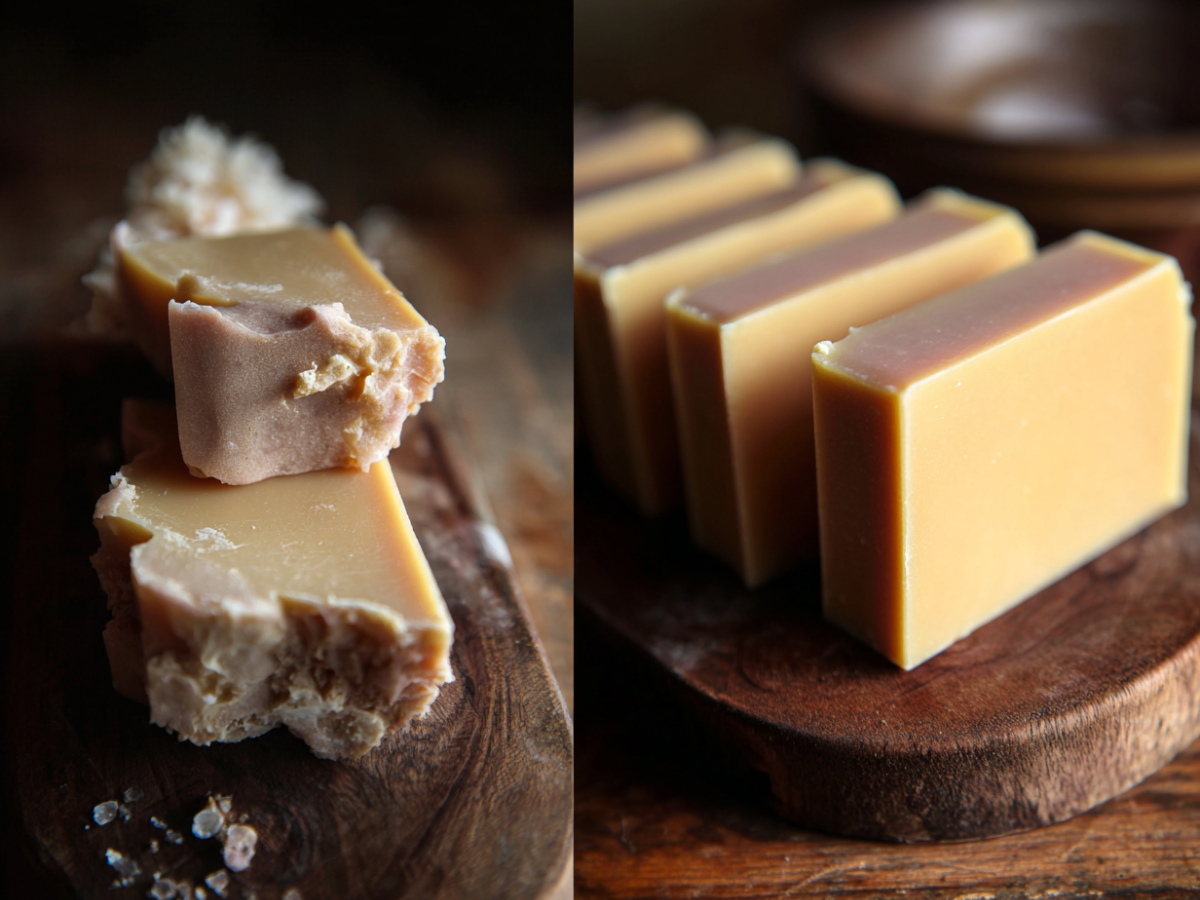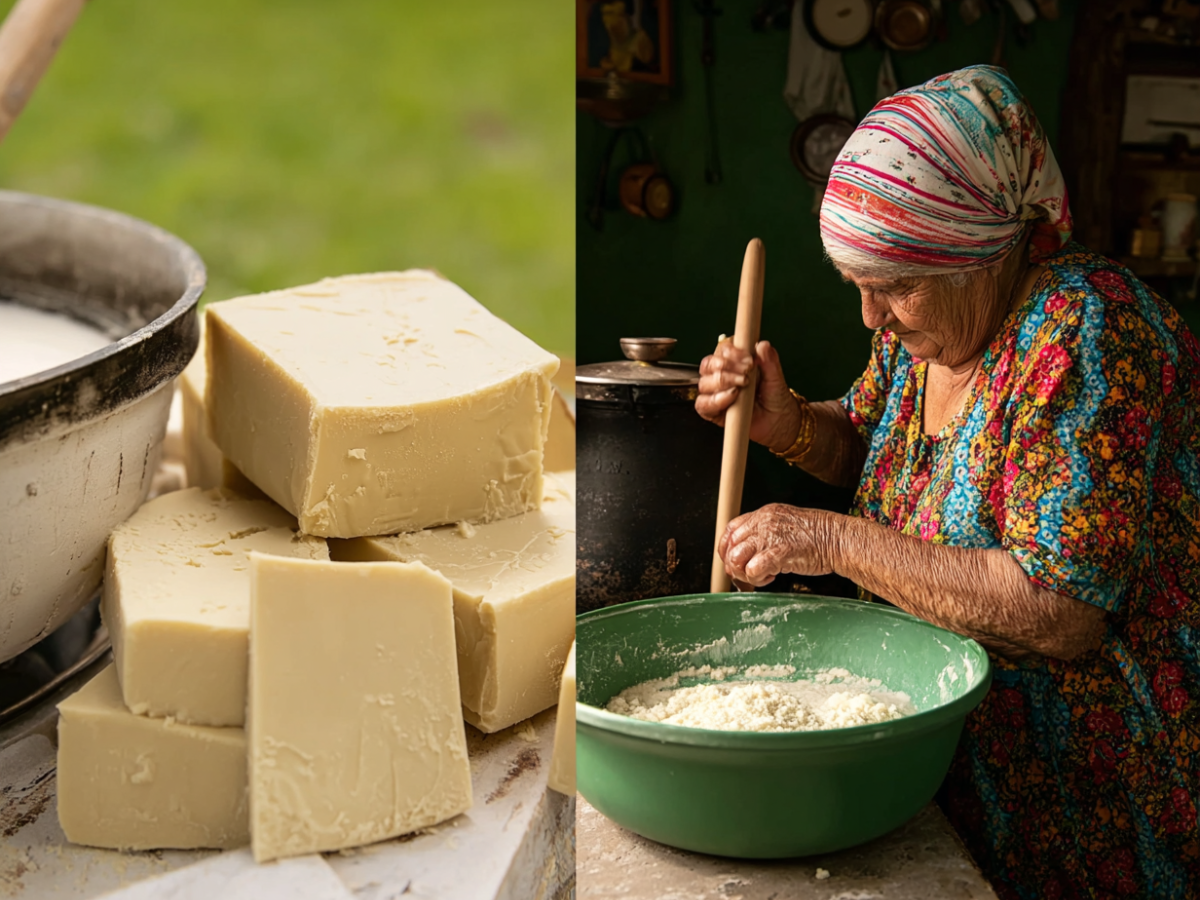Grandma’s Homemade Soap Recipe: A Timeless Tradition for Natural Living
The Comfort of Grandma’s Homemade Soap – Why This Recipe Matters
Do you remember the way your grandmother’s home always smelled warm, fresh, and clean? Maybe it was the lavender tucked in her drawers, the bread baking in the oven, or that bar of handmade soap she kept by the sink. There’s something about Grandma’s touch that makes even the simplest things feel special.
Today, you have the chance to bring that same feeling back into your own home. Making soap the way Grandma used to isn’t just about creating something useful—it’s about slowing down, choosing natural ingredients, and reconnecting with a tradition that cared for both people and the planet.
In this guide, you’ll learn exactly how to make Grandma’s Homemade Soap Recipe, discover variations, avoid common mistakes, and even explore the deeper benefits of switching to natural soap. By the end, you’ll feel confident enough to create your own batch and maybe even pass this tradition down to your family.
Why Choose Grandma’s Homemade Soap Over Store-Bought?
When you stand in the soap aisle at the supermarket, the shelves are lined with colorful bars wrapped in shiny packaging. But look closer, and you’ll see ingredients that sound more like a chemistry set than something meant for your skin.
Natural Ingredients, No Harsh Chemicals
Grandma’s soap was simple: real soap base, water, and natural boosters. Compare that to many commercial soaps filled with detergents, sulfates, parabens, and artificial fragrances. These can strip your skin of its natural oils and leave it dry or irritated. Homemade soap skips all of that.
Gentle on Skin & Eco-Friendly
Because you control what goes in, you can tailor homemade soap for sensitive skin, children, or anyone avoiding allergens. It’s biodegradable too, meaning you’re making a choice that’s kinder to the planet.
A Connection to the Past
Using a recipe like this is more than just DIY—it’s a ritual. Every time you lather up, you’re keeping alive a tradition that valued care, patience, and simplicity.
Essential Ingredients for Grandma’s Homemade Soap Recipe
Before you start, you’ll want to gather the essentials. The beauty of this recipe is how few ingredients it needs.
Here’s a simple breakdown:
| Ingredient | Quantity | Purpose |
|---|---|---|
| Marseille Soap (or natural soap base) | 300 g (1 bar) | Cleansing foundation |
| Water | 1 liter | Dilution |
| Baking Soda | 2 tbsp | Natural deodorizer |
| Washing Soda (sodium carbonate) | 2 tbsp | Degreaser, boosts cleaning power |
| Essential Oils (lavender, lemon, eucalyptus) | 5–10 drops | Fragrance & antibacterial support |
Pro tip: If you can’t find Marseille soap, you can use any natural soap base that’s free from artificial dyes and perfumes.
Step-by-Step Guide to Making Grandma’s Homemade Soap

This process is easier than you might think. Follow these steps, and you’ll have a batch ready in no time.
1. Preparation
- Gather a medium-sized pot, a wooden spoon, and clean glass jars or soap molds.
- Make sure you work in a ventilated area when handling washing soda.
- Lay out all ingredients ahead of time to avoid mistakes.
2. Cooking the Soap Base
- Grate the Marseille soap bar finely with a cheese grater.
- Heat the water in the pot until warm but not boiling.
- Add the grated soap and stir gently until it dissolves completely, creating a smooth mixture.
3. Adding Natural Boosters
- Once dissolved, add the baking soda and washing soda.
- Stir continuously to ensure they blend fully into the mixture.
4. Adding the Final Touch
- Remove from heat.
- Add a few drops of your chosen essential oil—lavender for calming, lemon for freshness, or eucalyptus for antibacterial power.
- Pour into jars or molds and let it set until firm.
In just a few hours, your homemade soap will be ready to use.
Variations of Grandma’s Homemade Soap Recipe
One of the best parts about making soap yourself is how creative you can get. Here are a few variations to try:
Herbal Infusions
- Chamomile flowers for soothing sensitive skin.
- Rosemary for a refreshing, herbal aroma.
- Mint leaves for a cooling effect.
Moisturizing Additions
- A spoonful of olive oil for hydration.
- Coconut oil for lather and nourishment.
- Shea butter for extra creaminess.
Seasonal Scents
- Cinnamon and orange peel in winter for warmth.
- Rose petals in spring for a floral touch.
- Peppermint in summer for cooling relief.
Common Mistakes to Avoid When Making Homemade Soap
Even simple recipes have pitfalls. Keep these in mind:
- Too much water: This will leave your soap soft and mushy.
- Adding oils too early: Heat can destroy their fragrance and benefits. Always add them at the end.
- Not mixing enough: Uneven texture can make the soap less effective.
- Using caustic soda without caution: Some recipes call for lye (caustic soda). If you experiment with this later, always wear gloves and goggles.
Benefits of Using Grandma’s Homemade Soap
You might be wondering if the effort is worth it. Here’s why it absolutely is:
- Better for your skin: No artificial detergents means fewer irritations.
- Eco-friendly: No plastic packaging, no chemical runoff.
- Cost-effective: A single batch can last weeks and costs less than buying multiple store-bought bars.
- A meaningful DIY: Every time you use your soap, you’re reminded of the tradition and care behind it.
Storage & Shelf Life of Homemade Soap
To keep your soap fresh and effective:
- Store in airtight containers or glass jars.
- Keep in a cool, dry place away from direct sunlight.
- Shelf life is about 2–3 months.
- Make small batches to avoid waste and keep scents vibrant.
Frequently Asked Questions About Grandma’s Homemade Soap Recipe
Can I make this recipe without washing soda?
Yes. Your soap will still clean, but it may not have the same degreasing power.
Is Grandma’s Homemade Soap safe for kids’ skin?
Absolutely—just stick to mild essential oils like lavender or skip them entirely.
How long does homemade soap last?
Typically 2–3 months if stored properly. Adding natural oils may shorten shelf life slightly.
Can I sell homemade soap from this recipe?
Yes, but always check local regulations for labeling and safety requirements.
What’s the difference between baking soda and washing soda?
Baking soda is milder and safe for skin contact. Washing soda is stronger and boosts cleaning power but should be used in moderation.
Conclusion: Bring Back the Tradition of Grandma’s Homemade Soap
When you make soap the way your grandmother once did, you’re doing more than creating something practical—you’re weaving yourself into a legacy of care, simplicity, and love for natural living.
Now you know exactly how to prepare Grandma’s Homemade Soap Recipe, customize it with herbs and oils, and avoid common mistakes. The next step is yours: gather your ingredients, set aside an afternoon, and give this timeless craft a try.
Imagine the joy of washing your hands with a bar you made yourself—fresh, natural, and full of tradition. Once you try it, you may never go back to store-bought soap again.
If you’re ready to reconnect with tradition and bring a piece of Grandma’s wisdom back into your home, start your first batch today. And when you do, share your experience—your story might inspire someone else to begin their own journey with homemade soap.


0 Comment